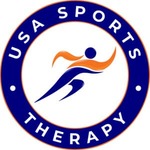One of the most common injuries as a result of car accidents is whiplash. While whiplash is most commonly caused by rear-end accidents, other causes of whiplash can include sports injuries, physical abuse, or other forms of trauma. Despite being fairly common, whiplash shouldn’t be underestimated. Depending on the severity of the injury, whiplash can lead to other problems of varying severity. In order to understand the best treatment options for whiplash, it is important to first understand what whiplash is and what causes it.
What is Whiplash?
Whiplash is a neck injury resulting from rapid forward and backward movement of the head, the neck moving much like a cracking whip. While many people who have whiplash end up recovering within a few weeks with treatment and proper neck exercises, some people end up with chronic pain for years after their injury. Whiplash can also have a variety of symptoms outside of the expected pain and stiffness in the neck. Symptoms of whiplash can include:
- Neck pain
- Headaches
- Loss of range of motion
- Tingling and numbness in the shoulders and arms
- Blurred vision
- Tinnitus
- Memory problems
- Difficulty concentrating
The severity and types of symptoms depend on the types and extent of the damage caused by the injury. The rapid motion that causes whiplash can not only damage the bones of the spine, but it can also cause damage to spinal disks, nerves, muscles, and tendons. If you feel any pain or numbness in seemingly unrelated areas such as in your arms or shoulders, it is possible that some of the spinal nerves leading to your upper body, specifically the spinal nerves exiting from the cervical spine at C3 and C4 vertebrae. These are located about midway down the neck.
Initial Treatment and When to See a Doctor
If you feel any kind of pain or numbness in the neck or back region after an accident or any kind of injury that may have resulted in whiplash, it is important to see a doctor as soon as possible. Since the neck and back are key parts of your central nervous system, it is important to make sure the injury didn’t result in any moderate to severe nerve damage. Seeing a doctor early can also help mitigate and treat any damage, helping to prevent your condition from worsening due to poor posture or other ways you might naturally try to compensate for any pain. The symptoms of whiplash may also take a few days to manifest, and it is common for people to think they are fine immediately after the accident, only to seek treatment later.
Your doctor will usually take a neck X-ray to determine the severity of the damage. If your neck feels unstable or it is difficult to hold your head up, they may also provide a neck brace to help keep your head in position for the first few days of recovery. Try to only use the brace when necessary, and only for the first day or two, as using the brace for an extended period of time can cause your neck muscles to begin to atrophy. If you feel you have severe injuries to your neck, you may also want to follow up with a neck and musculoskeletal specialist for a second opinion or further treatment options. Before being able to prescribe any kind of physical therapy, your doctors have to determine if your neck is structurally stable and able to handle stretching and movement without causing more damage. Once your doctors have ensured your body can handle it, they will usually prescribe some form of physical therapy to help restore your range of motion and assist with your recovery process.
Preparing for Physical Therapy
Once you have a prescription from your doctor, it is time to see your physical therapist. Before starting any kind of physical therapy, you may need to reduce swelling and inflammation to your neck. Your doctor may prescribe NSAIDs (Non-Steroidal Anti-Inflammatory Drugs) to help reduce swelling and pain. You can also try over-the-counter drugs such as Tylenol, but be sure to never take them concurrently with NSAIDs as this can cause harmful reactions between the two drugs. You can also use ice packs and cold therapy to reduce swelling to the affected area, but be sure to keep a towel or cloth between your skin and the ice pack to prevent frostbite.
Starting Your Treatment
When starting your physical therapy treatment, your therapist will assess your condition and provide a series of stretches and exercises to help slowly increase your range of motion along with stimulation treatment to help reduce tension in your neck muscles. When performing stretches, it is important to use slow and deliberate motions. Also never stretch to the point where you feel pain. If you reach a point where a position is causing you pain, move your neck back towards a neutral position until the pain stops. This position is where you’ll want to stretch in order to help improve your range of motion while at the same time not cause more damage by pushing your body too much.
Once you have built up more range of motion, you will then begin strength training exercises. These exercises are meant to help build up the muscles in your neck to restore neck stability and mobility. It is important not to overexert yourself while performing these exercises, and use light resistance so as to not further strain or injure your neck.
Where Should I Go?
If you have whiplash or any other neck injury requiring physical therapy, there are plenty of options in terms of where to seek treatment. If you live in the Miami area and are seeking a physical therapist for whiplash, our team would be glad to give you more information on our services as well as a consultation.

